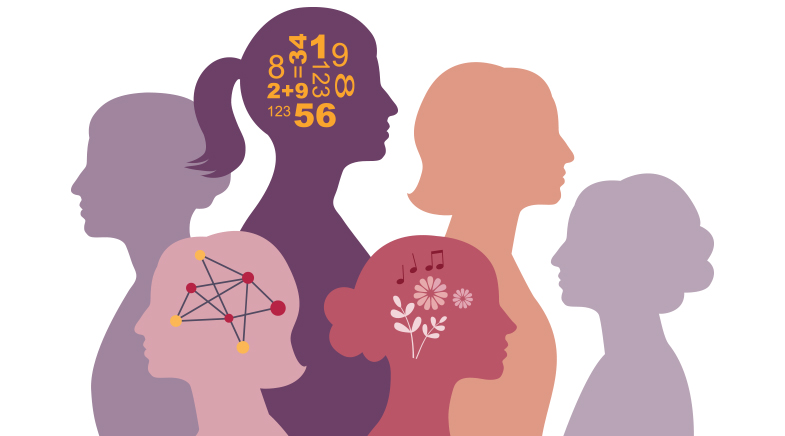A 'meta-atlas' is mapped
-
- from Shaastra :: vol 03 issue 11 :: Dec 2024 - Jan 2025

IIT Madras puts India on the brain cartography map with DHARANI, a collection of high-resolution 3D images of the human foetal brain.
A multidisciplinary, multinational team of researchers has broken new ground in human brain cartography by mapping the human foetal brain and releasing the most detailed 3D high-resolution images. The advanced neuroscience data and digital images of 5,132 brain sections at cell-resolution, released by the Indian Institute of Technology (IIT) Madras in December 2024, were made possible by cutting-edge brain mapping technology developed at the Sudha Gopalakrishnan Brain Centre (SGBC) at IIT Madras. The dataset, generated by researchers from India, Australia, the U.S., Romania and South Africa, in collaboration with Chennai-based MediScan Systems and Saveetha Medical College Hospital, was produced at about a tenth of the cost of similar work on the adult human brain in the U.S. The dataset, named DHARANI, has been made freely accessible (bit.ly/IIT-brain-map).
The Journal of Comparative Neurology dedicated a 1,000-page special issue to this study, given its significance; its Editor-in-Chief Suzana Herculano-Houzel noted in a commentary that with this research, "India gets a seat at the table of human brain cartography."
At a press conference to launch the dataset, IIT Madras Director V. Kamakoti said this study was like the first kilometre in a 100-km run. "This research... will outlive all of us," he added.
Imaging the human brain helps to study diseases that affect the brain by comparing normal and affected brains – for example, autism, depression, schizophrenia and bipolar disorders. Imaging foetal brains helps study the development of the human brain. It also helps develop computing technology.
India gets a seat at the table of human brain cartography, says Suzana Herculano-Houzel.
For this study, researchers acquired five brains of foetuses from the second trimester (week 14 to week 24) of pregnancies that did not go to term. "Getting the families' consent was challenging," says J. Kumutha, Dean and Professor of Neonatology, Saveetha Medical College and Hospital. The brains were frozen and sliced into very thin layers – a fraction of the thickness of the human hair – and then imaged at cell-resolution and recombined to form 3D images.
The researchers have acquired 200 more brains for study. These are preserved in a formalin-like solution. "Our goal is to complete 100 brains in 2-3 years. If we get the funds to accelerate it, we will do it sooner," says Mohanasankar Sivaprakasam, who heads the SGBC.
The SGBC was established in 2022 with the aim of mapping the human brain at the cellular level. The seed of an idea for the project was sown in 2015-16 by Infosys co-founder Kris Gopalakrishnan when, during a conversation with the then IIT Madras Director Bhaskar Ramamurthi, he exhorted IIT Madras, his alma mater, to start a brain research project. Subsequently, the faculty came up with the idea of mapping the brain.
At the time, there were already efforts by others to image the mouse brain. So, when the idea of mapping the human brain was mooted, it seemed too ambitious. Indicatively, a mouse brain is just 30 cc in size; a human brain is much larger. A young adult's brain is around 1,200 cc in size; a foetal brain is close to 100 cc.
Eventually, the group was sold on the idea of mapping the human brain. A draft proposal was sent to the then Principal Scientific Adviser to the Indian government, K. VijayRaghavan, himself a biologist. An impressed VijayRaghavan sent the proposal to about 20 people for a review. The reviewers felt it was too ambitious, but even so, IIT Madras got the go-ahead in February 2020.
As the COVID-related lockdowns came into force, work on the human foetal brain imaging project was started. The lockdowns and COVID protocols "actually strengthened our resolve and by 2023 we had completed the imaging", says Sivaprakasam. "Then came the work of contouring the data, annotating it and so on. That took about six months." In mid-2024, the study was accepted for publication by The Journal of Comparative Neurology, which had in 2016 published the Allen Human Brain Reference Atlas mapped by the U.S.-based Allen Institute for Brain Science (bit.ly/allen-brain-atlas).
DHARANI calls itself an atlas, but it is in fact the beginnings of a meta-atlas, notes Herculano-Houzel. "What lies ahead, as DHARANI continues to grow, is an atlas of atlases: a platform to visualize the brain, in all its complex glory, as it morphs into its adult self."
See also:
Have a
story idea?
Tell us.
Do you have a recent research paper or an idea for a science/technology-themed article that you'd like to tell us about?
GET IN TOUCH














